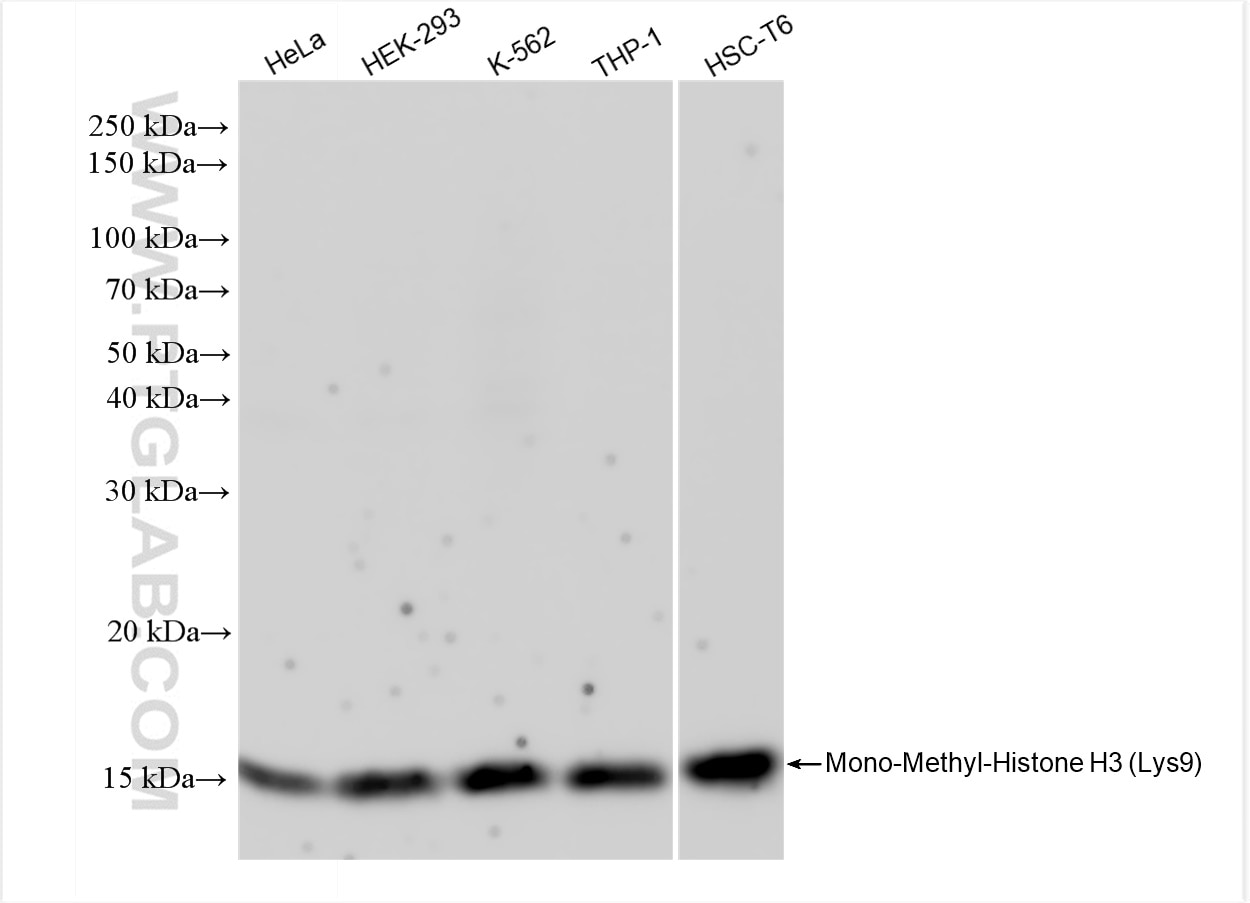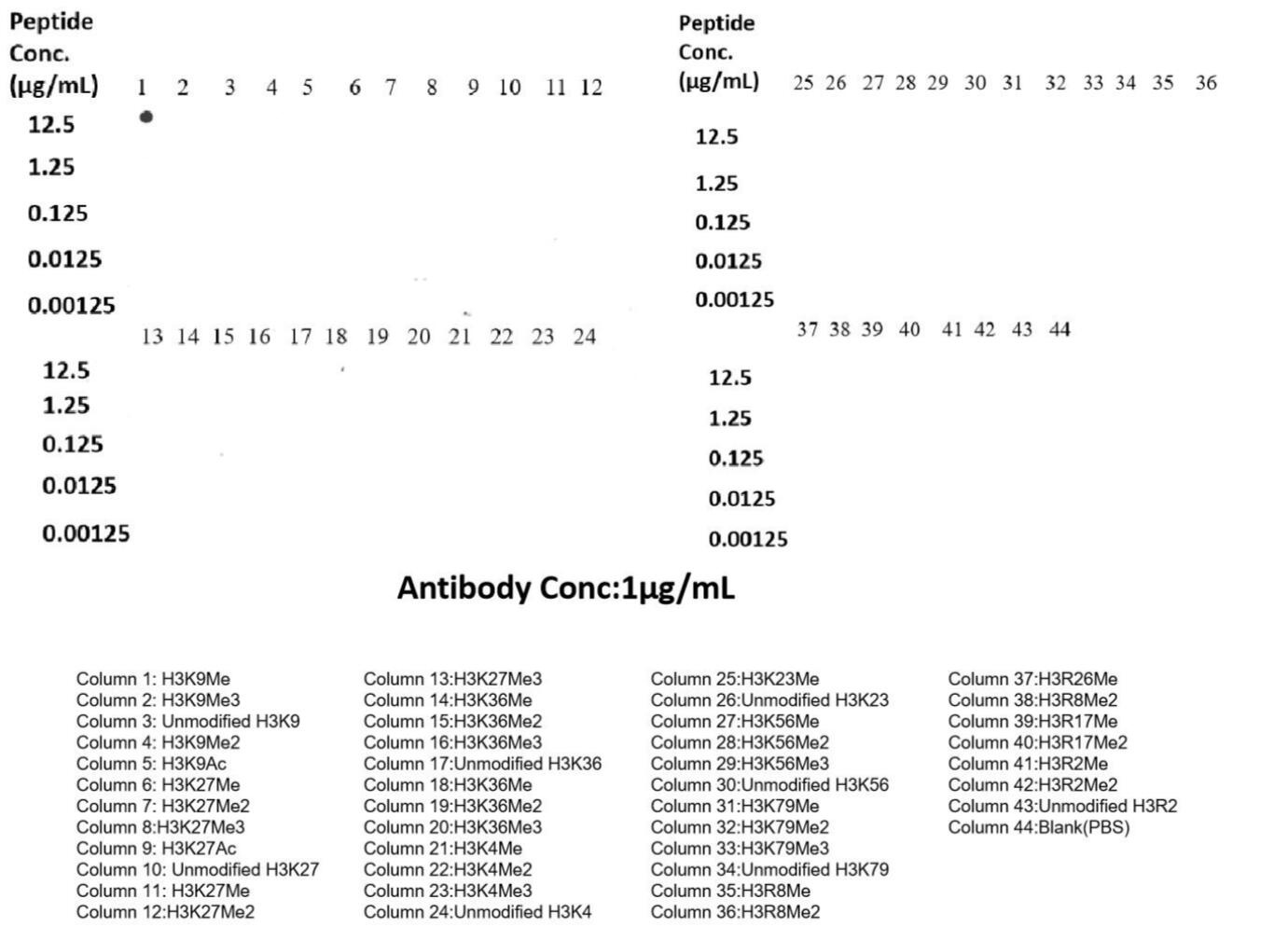Validation Data Gallery
Tested Applications
| Positive WB detected in | HeLa cells, HEK-293 cells, K-562 cells, THP-1 cells, HSC-T6 cells |
| Positive Dot Blot detected in | peptide |
Recommended dilution
| Application | Dilution |
|---|---|
| Western Blot (WB) | WB : 1:5000-1:50000 |
| DOT BLOT | DOT BLOT : 1:10-1:100 |
| It is recommended that this reagent should be titrated in each testing system to obtain optimal results. | |
| Sample-dependent, Check data in validation data gallery. | |
Product Information
82821-6-RR targets Mono-Methyl-Histone H3 (Lys9) in WB, Dot Blot, ELISA applications and shows reactivity with human, rat samples.
| Tested Reactivity | human, rat |
| Host / Isotype | Rabbit / IgG |
| Class | Recombinant |
| Type | Antibody |
| Immunogen | Peptide 相同性解析による交差性が予測される生物種 |
| Full Name | histone cluster 1, H3a |
| Observed molecular weight | 15 kDa |
| GenBank accession number | BC066245 |
| Gene Symbol | HIST1H3A |
| Gene ID (NCBI) | 8350 |
| RRID | AB_3670563 |
| Conjugate | Unconjugated |
| Form | Liquid |
| Purification Method | Protein A purification |
| UNIPROT ID | P68431 |
| Storage Buffer | PBS with 0.02% sodium azide and 50% glycerol , pH 7.3 |
| Storage Conditions | Store at -20°C. Stable for one year after shipment. Aliquoting is unnecessary for -20oC storage. |
Background Information
Histones, including H1/H5 (linker histones), H2, H3, and H4 (core histones), are nucleic proteins which interact with DNA to form the nucleosomes and play important roles in gene regulation and DNA replication. Histone proteins are highly post-translationally modified while Histone H3 is the most extensively modified. Methylation of Histone H3 at lysine 9 is linked to transcriptional repression.
Protocols
| Product Specific Protocols | |
|---|---|
| WB protocol for Mono-Methyl-Histone H3 (Lys9) antibody 82821-6-RR | Download protocol |
| Standard Protocols | |
|---|---|
| Click here to view our Standard Protocols |

